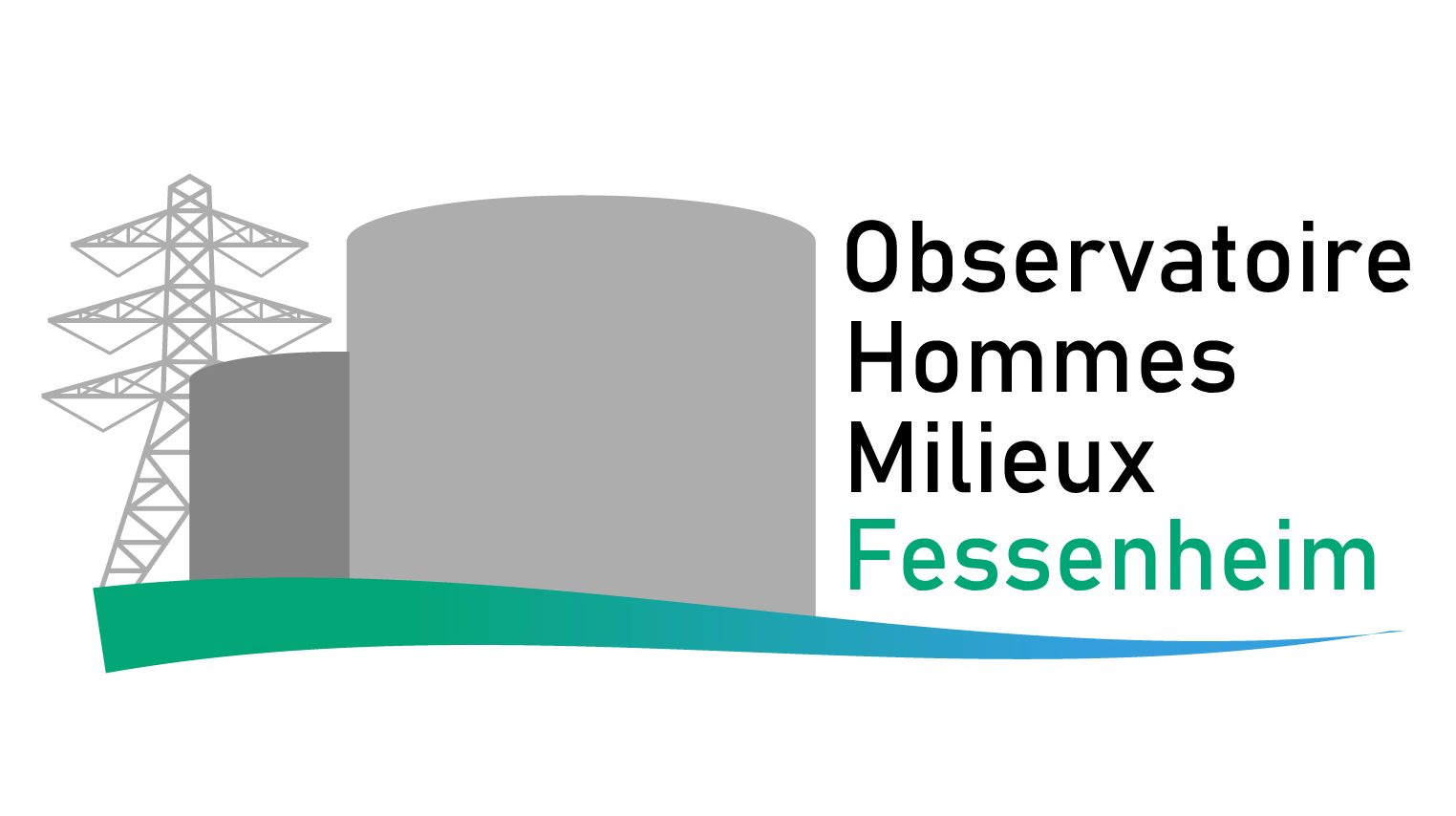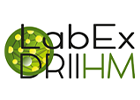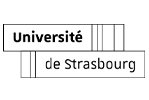Project’s objective
To study and better understand the metallic trace elements (MTEs) dynamic in a selected natural aquatic biotope transferable to other natural systems via the pooling of the specific expertise and advanced analytical techniques available at the University of Strasbourg-IPHC (France), at the University of Haute-Alsace- ENSCMu (France) and at KIT-INE (Germany).

Executive summary
Over the last decades, numerous human activities have emitted and released (micro)pollutants (e.g. metallic trace elements (MTEs)) in terrestrial and aquatic ecosystems. Developing fundamental knowledge on the mechanisms controlling their environmental behavior is critically required.
A specific case concerns the decommissioning of nuclear facilities, currently performed in Germany and planned in France at Fessenheim (Alsace, France). A careful scientific characterization of the sites before, during and after decommissioning is mandatory to assess environmental impacts. The outcome of careful MTEs analyses has to be combined with an assessment of their potential mobility in the ecosphere, i.e. the determination of their potential nano-vectors. These data could significantly affect future planning (i.e. regarding the site conversion, land use or the public acceptance).
The precise analysis of metallic trace elements (MTEs), present at ultra-trace concentration levels, in samples collected from or close to these decommissioning sites, poses a significant technical challenge. This work focused specifically on the Fessenheim site. The results contribute to the creation of a status quo data set for the Rhine aquatic biotope near the Fessenheim nuclear power plant (NPP) before the start of the decommissioning phase. A global initiative is on-going in the frame of the “IdEx Juxta Rhenum” project (Strasbourg University) and the Human-Environment Observatory „Fessenheim“ (LabEx DRIIHM of CNRS) that aims to study the socio-economical impact of the Fessenheim NPP.
Via the granted SEED-MONEY project C4-PON, the application of ultra-sophisticated analytical methods available at the partner institutes allows establishing an inventory of the natural and/or anthropogenic substances present (MTEs, organic and inorganic material), their potential interaction and thus plausible dissemination pathways.
The surface water samples originate from the Old Rhine River (ORR) and the Grand Canal d’Alsace (GCA) and were collected upstream, downstream and at the level of the NPP Fessenheim. They were sampled in June 2020, September 2020 and March 2021, thus just before and few months after the Fessenheim NPP shut down.
Rather similar values of pH, water temperature, conductivity, dissolved oxygen concentration, anions and major cation concentrations are found along the ORR and the GCA. The data are comparable to those available from the International Commission for the Protection of the Rhine (ICPR) and from the IdEX Juxta Rhenum project.
MTE concentrations lie at or below typical river water levels. Among the “naturally occuring” inorganic elements detected, iron, aluminum and boron are certainly present as (nano) particles (as removed by a water filtration step at a 450 nm threshold). Specifically during the project, the concentrations of the lanthanides, the 60Co, the 137Cs, the naturally occurring radionuclides 232Th and 238U, as well as the ultra-trace anthropogenic radionuclides 236U, 237Np and 239Pu were determined via gamma spectroscopy, ICP-MS and AMS.
The concentrations of ultra-trace anthropogenic actinides measured indicate fallout from atmospheric weapon tests as a likely origin. No 239Pu could be detected. A 236U/237Np isotopic ratio was calculated and found to be similar to a natural water sample located in a German natural reserve approximately 110 km to the northeast of Fessenheim. The determined 236U concentrations were compared to a literature value of a water sample from the Danube River in Romania, close to the Black Sea, and were found to be lower by one order of magnitude. No 60Co or 137Cs could be detected in the ORR and GCA samples collected by using the gamma spectroscopy equipment applied. Overall, no significant difference could be detected between the samples collected at various locations (upstream, in the front of, and downstream of the NPP) nor between the GCA and the ORR.
In all river water samples (ORR and GCA) some organic matter was detected and characterized using spectroscopic, fractionation and mass spectrometry methods. It turns out to be very similar from one sample to the others and between the GCA and the ORR. The various methods consistently reveal the presence of a rather small fulvic acid-like OM fraction accompanied by a larger humic acid-like one. The molar mass distribution lies between 0.8 – 2.0 kDa for all the waters, which in turn matches with the molecular weight proposed in the literature for humic substances (HS) which is varying between 1 and 5 kDa. The HS fraction is the biggest contributor (50 to 65%) of the dissolved organic carbon (DOC) in all the Rhine water samples. The total DOC-concentrations range between 1.1±0.1 to 1.5±0.2 mg/L and the total dissolved N concentrations between 1.0±0.1 to 1.3±0.1 mg/L for all the waters. The nitrogen concentration reflects the presence of nitrates.
The OM was extracted and further characterized at the molecular scale by ESI-FT-MS. Each water samples contains molecules of the types of low oxygenated condensed aromatics (PACs), low to moderately oxygenated non-condensed aromatics (NCAs) and low to highly oxygenated aliphatics, with the later being the most abundant. The only difference is the higher number of molecules identified in the GCA sample taken at the NPP. It might be due to a preferential input of waters draining the forest systems close to the NPP, which are rich in lignin degradation products.
OM extracts sorption studies onto hematite mineral surface showed that aromatic and oxygenated molecules adsorbed preferentially. Thus at the OM-hematite particles interface, a splitting of OM is evidenced.
Our pioneer work to elucidate an eventual OM and/or nanoparticles-MTE association in the “undisturbed” sample is not entirely conclusive. A clear association of MTEs to OM as one would expect in case of complex formation with coordinating OM functional groups could not be identified, except for the sample taken in March 2021. Here, in all water samples, the copper element is undoubtedly associated with the OM present. To decipher, more systematic investigations and sampling campaigns would be necessary.
Nonetheless, after a voluntary addition of a mixture of several inorganic elements in the “undisturbed” Rhine water samples it was possible to highlight the potential affinity of the uranium and lanthanide elements for the OM present. However, in this case, during the suspension preparation, the pH was decreased and increased again. The potential carbonate release at lower pH might be the reason of the resulting elements-OM association observed. This shed the light of the key role played by the carbonates in the Rhine river water speciation. Additional complexation test with uranium and the OM extracts conducted at rather low pH shows that the carboxyl and phenol bonds are involved. In the ternary system involving uranium, OM extracts and hematite particles (as mineral surface), the oxygenated groups carried by the OM participate to the formation of i) organic complexes and ii) metallo-organic complexes on the mineral surface. The exact structure of this complex is presently not known. Accordingly, the OM reactivity towards the MTE and some mineral surface representative of the natural medium is demonstrated and the OM might be considered as an MTE vector. Further work is nevertheless absolutely necessary with, for example, model systems composed of a single molecule representative of the environment water of the ORR and the GCA, used to simplify the possible interactions and provide more answers.
Our main conclusion is that for the samples collected from June 2020 to March 2021 and originating from the ORR and the GCA, the results are very similar regarding the substances examined, especially the MTE and the OM. They most probably found their source (release) upstream the division into the ORR and the GCA. The OM might be a MTE vector. Respective emissions from the Fessenheim plant or an impact from the different river beds (concrete in the case of the GCA and a natural cobble bed in case of the Old Rhine River) are not discernable. No impact from the industrial site is evidenced, neither just before nor few months after the closure. No effect of the closure at the end of June 2020 could be yet evidenced from our analyses.
EUCOR offered the opportunity to initiate a cross-border expertise center for these accurate analyses by pooling advanced equipment and expertise. Despite the sanitary situation (COVID- 19 pandemia), we managed our SEED MONEY project and four master students took benefit of it via educational training. The present analysis approach is transferable to various industrial places and scenario. More exchanges, inter-laboratory discussion and experimental work would have been necessary to develop a more detailed methodology and some models in order to better assess the potential MTE mobility in the ecosphere. This project has nevertheless successfully initiated an international collaboration, which opens the door to future work. Accordingly, the main objective of the SEED-MONEY project funding is totally fulfilled.
Contacts
Muriel Bouby, project leader, Karlsruher Institut für Technologie (KIT), Institut für Nukleare Entsorgung (INE)
Mirella Del Nero, Institut Pluridisciplinaire Hubert-Curien (IPHC), UMR 7178 CNRS/Université de Strasbourg
Jocelyne Brendlé, ENSCMu, Université de Haute-Alsace
With the work and/or collaboration of M. Altmaier, E. Azman, R. Barillon, O. Courson, H. Geckeis, F. Geyer, S. Georg, N. Heuser, T. Kisely, S. Kraft, S. Kuschel, M. Plaschke, F. Quinto, Th. Roth, A. Thumm.




